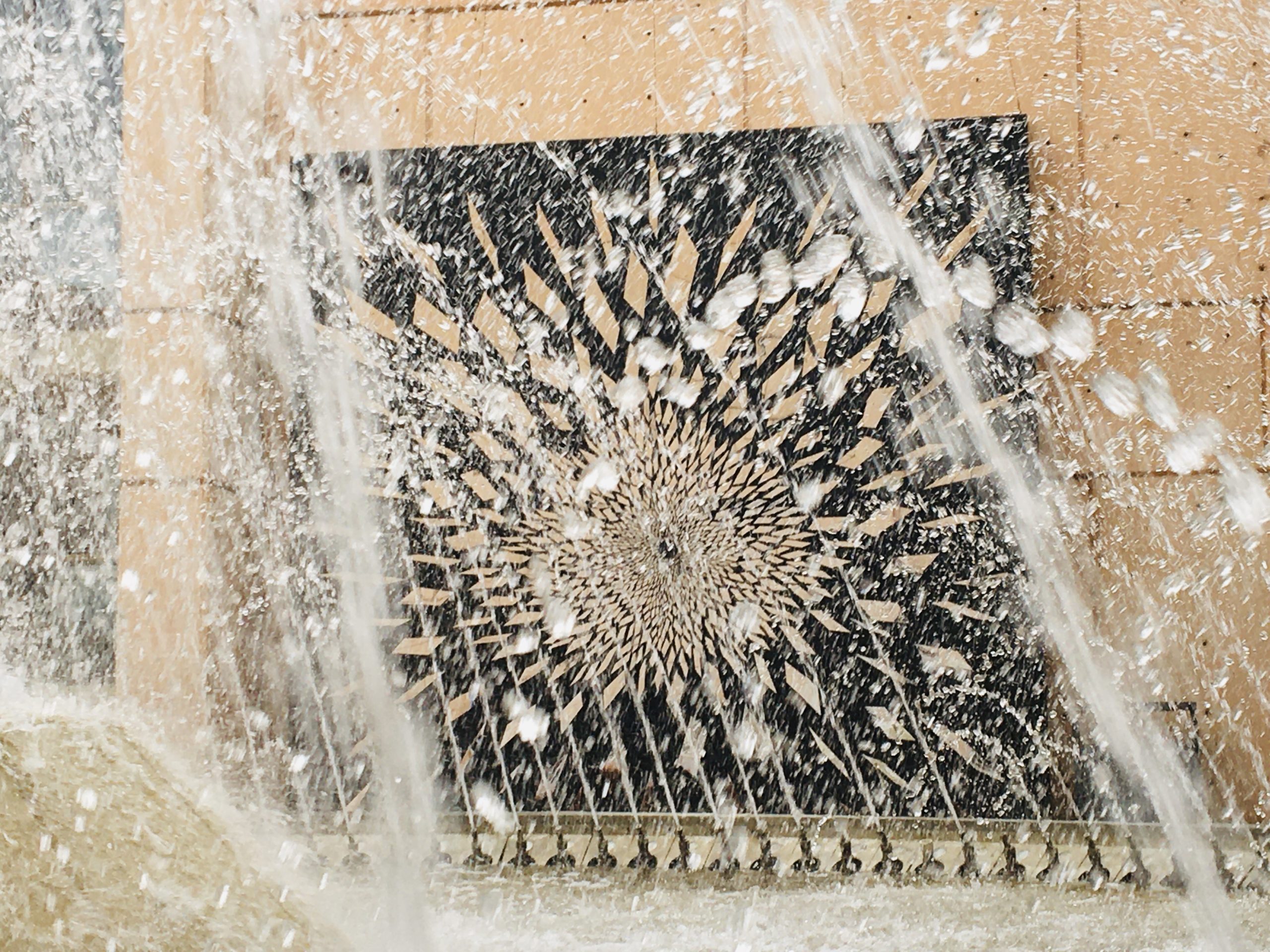Tips when taking on art commissions
These 3 tips will help you navigate art commissions when working with clients and brands. following these tips will allow you to enjoy creative problem solving with you creative expression in your career.
1. Maintain Creative freedom through better communicating your ideas to clients
2. Maintain your Copy Rights. Be aware of the term “Work for Hire” in your contracts.
3. Be Selective with the commission you take on. All commissions are not good commissions
As a self-employed contemporary artist, I rely on commissions more so than selling my work in galleries. However, some artists are not great negotiators or business-minded, and art commissions that start off optimistic can sometimes turn into a sour experience. These eight tips will help you maintain good clients, manage their expectations, and produce work with integrity.
TIPS FOR ARTISTS ACCEPTING COMMISSIONS
1 – Timing is key. Be responsive and follow up on your leads immediately.
If someone expresses interest in buying one of your pieces, but can’t make a deposit or payment right away, take down their contact info and follow up with them by the end of the day/event. Most people who buy art don’t “need” it. It’s a luxury item that is often an impulse buy — they fall in love with the art and have to have it. But if you wait too long, the infatuation can fade or even transfer to another item. If the art is intended as a gift, timing is even more important. I learned while working in advertising that no matter how well your product is advertised, if you don’t make the sale at the right time, you’ve missed the chance. But luckily, people are more willing to wait when it comes to art.
2 – Don’t be shy to state your terms.
It’s always wise to have an artist’s agreement signed by both parties to protect you from unwarranted situations. First off, licensing terms should be made clear. Does the client want the right to reproduce the artwork for commercial use/sale? They may think that owning the artwork is the same as owning the license to reproduce it as they see fit. It’s your job to educate them if this is the case. Most artists retain their licensing rights for their work even after a sale. But an unaware client may take your commission and innocently reproduce it on T-shirts or publish it for commercial use without informing you first. That will definitely lead to a sticky situation that could be avoided. Freelance artists may also ask for a “kill fee” — a mandatory fee in case the project is cancelled midway. Kill fees can be 50 – 100% of the project cost, depending on how soon the project is cancelled.
3 – Ask for a payment up front.
It’s fair to ask for as much as 50% up front to cover the cost of your materials and time. Some people prefer 30% down and a couple of installments. I would recommend taking between 30 – 50% up front, unless the commission is for a friend or somebody who has good standing credit with you. For larger commissions, consider a monthly payment plan, where you send your client monthly progress updates. Making a payment will help both the patron and the artist stay invested in the piece, and build a credible professional.
4 – Know exactly what you’re being asked to do.
Be clear in your descriptions and check in with the client at certain intervals. Remember why the client chose you to begin with, and don’t doubt your ability. DO take creative license — this is why you were hired! DO start with concepts or sketches for them to approve before moving on to costly or large scale work. DON’T check in too often, or seem unsure of yourself or ideas, as this is an open invitation for your patron to suggest their ideas, or perhaps drag you along a creative journey that isn’t your own. They’re just trying to help, but it’s probably doing the opposite.
5 – Cherish your good clients, and learn to manage difficult ones.
Not every commission will go smoothly, but don’t let a few bad experiences ruin the potential for great ones. I’ve had my share of difficult clients, especially when I was an eager and fresh art school graduate. This is a learning curve that will take experience, but here are some cues to watch out for. The good clients will insist on paying you up front, leave a lot of the artistic license to you, and give you a broad spectrum to work with without interfering with your creative process. Hang on to the good clients, as their trust will inspire you to be more creative, resulting in more portfolio pieces, and you’ll love what you do even more. The bad ones will try to dictate how you do things, change their minds after you’ve already started, or micromanage your work — but they insist they’re just trying to help. Good client management skills and educating your client on your process — like what you DO and DON’T need from them in terms of creative input — is crucial to keeping the integrity in your work.
6 – Know your market.
What type of art do you enjoy creating the most? What type of art are you best at? If you market yourself wisely, you’ll end up with commissions you absolutely enjoy. I had trouble deciding for a long time because I enjoy creating in many styles — my work ranges from plein air landscapes and travel memoirs to quirky dark illustrations to colourful portraits. If I had to choose, I do enjoy the illustrations the most, but they take the most time and have a much slimmer market compared to the landscapes and colourful.
7 – Have a method to pricing your work.
This will prevent panic when an opportunity comes up. Most artists price their work based on a per project rate ($ = estimated hours to completion x hourly rate) or based on size ($/sq footage) but there are four variables to keep in mind:
1) Time – Will you be working weekends or long hours? Or can you do this leisurely in a couple of hours? Is it due immediately, or can you take your time?
2) Size – Larger pieces require more paint, materials, handling, shipping costs, etc.
3) Skill Required – Portraits and figurative art generally require more skill than landscapes, so they are priced higher. Is the subject complex, like lace or patterning that requires a lot of detail?
4) Creative Integrity – Will this piece enhance your portfolio, or will you never show it off after it’s complete? Is the project interesting, meaningful, and fun to work on?
8 – Provide a good experience by sharing your process.
The more open and honest you stay with a client, the more positive the experience will be for both parties. Check in periodically, and send them some photos of work in progress, or an enthusiastic update. I can’t stress the enthusiasm enough: YOU are the artist. If you sound excited about your piece, so will the client. If you sound unsure or unconfident, chances are your client will also lose confidence in the project.
Markham artist Stacey MacNevin stresses the importance of not just delivering a painting, but delivering an overall experience. She advises, “Spend the time up front really listening to what a client wants for their piece. They may say: ‘I love your stuff — do whatever you want’ but what they are really asking you for is an experience.” Commissioning an artist should be an interesting, thrilling, and enjoyable experience that is rich in conversation and creativity. So take the time to understand your client, listen to their vision, and give them some insight into your creative process. It’s worth the time two-fold: the client will feel more connected to the piece because they are now more connected to your process.
While art commissions can sometimes be an exercise in trial and error, in my experience, these tips make clients happy and allow you to maintain your artistic integrity and creative vision.
Here are some questions to ask your client when working out the initial expectations of a commission:
- Does the client have a design brief?
- What is the timeline?
- Is the client expecting sketches of preliminary designs? If so, will those be paid separately?
- Is there an expectation of travel? And if so, who will cover this expense?
- If the work is to be used commercially, where will it appear (web, print, etc)?
- Am I free to interpret a theme or are there specific elements that need to be incorporated into the design, such as a client logo?
- If the product is a physical artwork, what is the size and medium?
- If the product is digital, what are the technical requirements (size, file type, number of images or files)?
Every commission contract should include:
The description of the project:
The contract should start with a loose description of everything you verbally agreed on (the size, colors, materials, subject matter, and other details of the composition).
Payment Agreement:
Most artists will request a 50:50 payment structure, requiring you to pay 50% upfront and the rest when the artwork is finished. Paying in advance is important, as it allows artists to purchase materials, and cover their initial expenses. In order to elaborate on the price, the artist will probably list the prices of other pieces, as a point of reference.
Creative Process:
This is where the artists should detail their requirements. For example, if you want a portrait of your dog, the artist may ask you to send several clear images of the pet. Also, this is the part where you arrange how often you’ll receive visual updates, (drafts, progress photos, etc.) and in what form (high-resolution images are great for two-dimensional works, but videos are more useful for sculptures, as they show the piece from every angle).
Copyrights:
It’s important to mention that even when you purchase a piece, artists still retain legal rights to it. Most artists will want to include an image of the artwork in their portfolio or website and sometimes, artists will ask to borrow their art pieces for an exhibition. If there’s a reason why you don’t want the art piece to be featured on their website (for example because it’s a very private portrait of your loved one or a portrait of your house) make sure to state that in the contract.
Shipping Strategy:
Now that you have an artwork completed, you need to get it delivered. It is important to explore shipping options and ensure that the artwork you ordered arrives safely on its location. In this part of the contract, you’ll see who is arranging the shipment: the client, or the commissioned artist. If you are ordering an art piece from another country, you will likely have to pay taxes, customs charges, import duty, and VAT, which will increase the price of the commission.
Since shipping can be complicated, it might be better to leave it to the artists or their gallery. Most galleries are knowledgeable about shipping options and additional costs, and will be more than happy to take care of all shipping arrangements.
Timeline:
The timeline should contain time estimates for every part of the creation process. It should include a payment schedule, deadlines for drafts and compositional previews, (and their approval), and the time needed to complete and deliver the work.
Source: Artacacia.com













